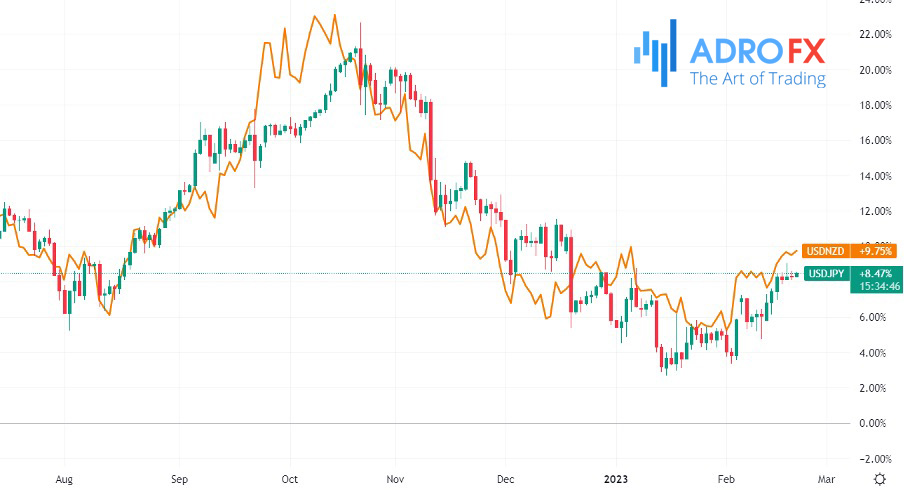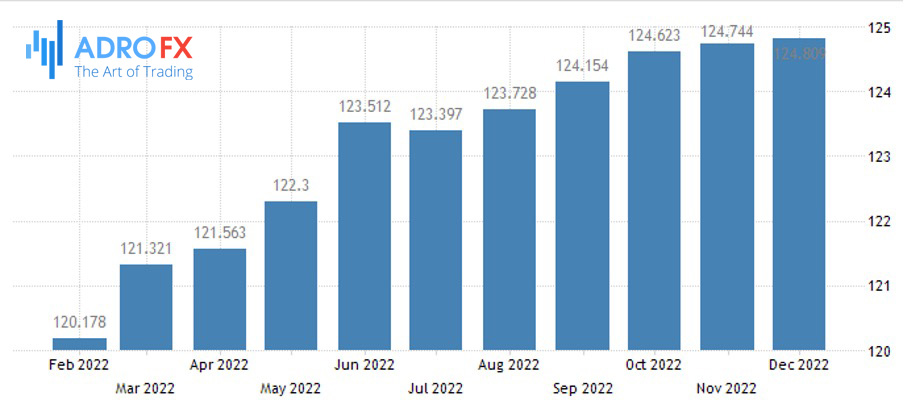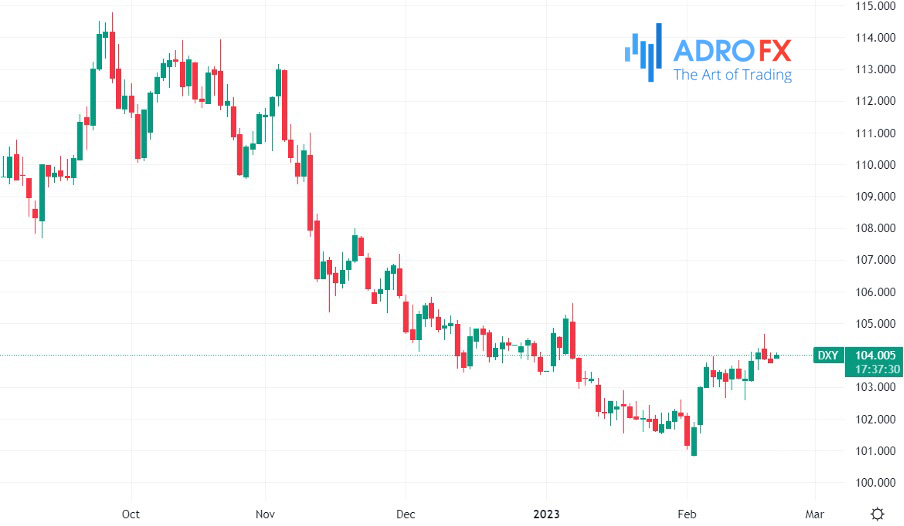US Dollar Has More Potential To Strengthen | Daily Market Analysis

Key events:
- Austalia – RBA Meeting Minutes
- UK – Composite PMI
- UK – Manufacturing PMI
- UK – Services PMI
- Canada – Core CPI (MoM) (Jan)
- Canada – Core Retail Sales (MoM) (Dec)
- USA – Ex-sting Home Sales (Jan)
The dollar weakened slightly against the euro, the Danish, and the Swedish krona, but added against the other G10 currencies. The yen weakened by 2% to become the weakest currency in the G10 group.
Last week's CPI, PPI and Retail Sales data in the U.S. highlighted solid inflation and robust demand, which may prompt the Fed to raise interest rates higher than previously expected. The combination of rising borrowing costs and continued price pressures are hurting household finances, with U.S. debt at its highest level in two decades.
Meanwhile, the European Commission is more optimistic about the eurozone's economic outlook, while the latest data on Japan's economy has been disappointing.

The dollar was cheaper against most of its major peers yesterday, still trying to get stronger only against the yen and the New Zealand dollar. The U.S. was on holiday due to Presidents' Day or George Washington's birthday. Canada was celebrating Family Day.
Stocks in Europe and Asia were showing a renewed appetite for risk, supported by optimism about a speedy economic recovery in China.
Meanwhile, Thomas Barkin, head of the Federal Reserve Bank of Richmond, said that he supported a March rate hike in increments of +25 bps, which would give the Fed some flexibility as part of its strategy to regain control of inflation.
Another Fed spokeswoman, Mrs. Michelle Bowman, said that further rate hikes remained necessary because inflation was still too high.
The federal funds rate futures market expects a rate hike in March and May in 25-bp increments with nearly a 100 percent probability. Assumes the risk of a third rate hike in June and now puts the peak rate at 5.3%. At the end of 2023, the rate is assumed to be 5.1%. This indicates that the market is no longer confident that the Fed will decide to cut rates this year.
Markets are reacting strongly to the CPI, and they are rarely reacting in a meaningful way to the PCE data. Yet the PCE is the Fed's preferred indicator of inflation. This is because the CPI is published earlier, and one can already judge quite accurately what the PCE will be.

But now, experts believe things will be different, and the January PCE deflator will be the focus of the market, as there is a risk that the indicator will indicate: general and core inflation accelerated not only every month but also on an annual basis.
Fed Chairman Jerome Powell, judging by his comments, is keeping a close eye on core PCE inflation, which excludes home rents. Such inflation is difficult to predict from the available CPI data since that is the component where the two indicators of price pressures are weighted differently. If the PCE deflator on a year-to-year basis (released Friday) shows an increase above 5% y/y in January, that would be a strong factor in supporting the continuation of the dollar correction that has been going on for 3 weeks in a row.
The dollar has not burned out all the fuel of the correction, and its estimated potential is in the 104-106 point range. A more significant rise in the dollar could occur if the data in the coming months begin to point to a strong acceleration in inflation. In that case, the market would begin to build up expectations of a Fed rate hike of up to 6% per year. That would suggest a more significant rise in the dollar index.

For now, however, experts` baseline scenario does not suggest such a significant increase in rates. Still, there is reason to assume that the labor market will slow in the coming months, and core inflation in the U.S., particularly core service sector inflation, will begin to slow more markedly.
So for now, the outlook remains as follows: the main trend (weakening of the dollar) is in force, but further strengthening of the dollar within the framework of a correction with a potential test of 105.50-106.00 p. on the dollar index is possible shortly.









